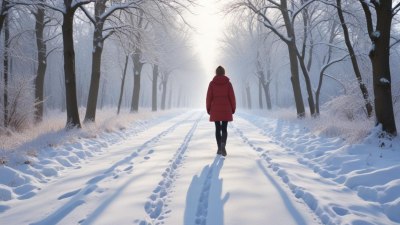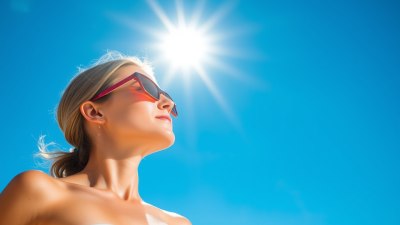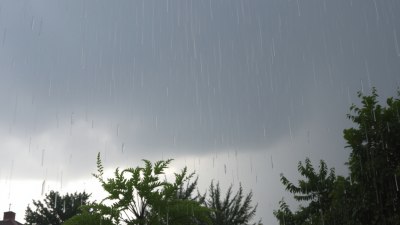Why You Walk Faster in Winter and Slower in Summer
Explore the reasons behind changes in walking speed due to seasonal variations.

This image was created with the assistance of Freepik
Have you ever noticed how your walking pace seems to change with the seasons? During winter, you might find yourself striding more quickly, while the heat of summer can make you feel like you're moving in slow motion. This phenomenon is not just a matter of perception; it has multiple factors contributing to it, ranging from physiological responses to environmental conditions. In this article, we delve into the science behind why you walk faster in winter and slower in summer, examining the various elements that play a role in our walking speed.
Physiological Factors
One of the most significant reasons for changes in walking speed is our body's physiological response to temperature. As the temperature drops, our body must work harder to maintain its core temperature. In colder conditions, many people's bodies initiate a range of changes to conserve heat and maintain optimal functioning.
When temperatures decrease, blood vessels constrict, a process known as vasoconstriction, which helps to preserve body heat. This constriction can lead to an increased heart rate and heightened circulation to essential muscles used in walking, allowing us to feel a sense of urgency and energy when navigating through colder environments.
Additionally, winter often encourages individuals to dress in layers, which can serve both to keep warm and potentially make your walking style change. The type of footwear associated with winter, such as boots, can also lend to a more purposeful and brisk walking style as individuals seek to avoid slipping on ice or snow.
Psychological Influences
The impact of psychology on walking speed should not be underestimated. In the winter months, people often feel invigorated by the change in season, and many enjoy activities associated with colder weather. The association of winter with festivities, holidays, and activities like skiing and snowboarding can create a sense of excitement and motivation to move quickly. This psychological prompt causes individuals to adopt a brisker walking pace, acting as both a response to the environment and a way to embrace the season.
On the other hand, summer brings with it the heat and humidity that can sap your strength and diminish your zest for brisk movement. Hot weather often leads to feelings of lethargy and fatigue, causing individuals to consciously or subconsciously reduce their walking speed. Additionally, the longer days and slower pace of summer encourage more leisurely activities, leading to an overall impression of a slower pace in daily life.
Environmental Conditions
Weather conditions undoubtedly play a pivotal role in affecting our movement speeds. Snowy, icy, and windy conditions can make walking difficult. To remain stable and avoid accidents, many individuals tend to quicken their pace as they navigate treacherous terrain. This can often lead to the perception that people are walking faster in these conditions when, in fact, they might just be compensating for potential obstacles.
In contrast, blazing heat and high humidity can be draining, making it considerably less appealing to remain active. During the summer months, individuals may choose to walk more slowly to avoid overheating or dehydration, leading to a noticeable decrease in walking speed. The body, when faced with excessive heat, will naturally want to slow down its pace to regulate temperature, making the act of walking feel more strenuous.
The Influence of Daylight
The amount of daylight we experience significantly alters our activity levels and perception of time, which can, in turn, impact our walking speed. In winter, fewer daylight hours may compel people to undertake their activities more quickly to avoid being outside in darkness. Evening walks could become more rapid, as individuals may wish to finish their outings before the sun sets.
When summer rolls around, the extended daylight can lead to a more relaxed approach to outdoor activities. You may take leisurely walks under the sun, fully embracing the warmth and relaxation that comes with longer evenings. This can result in a natural inclination to wander at a slower pace, relishing the experience rather than rushing through it.
Health and Fitness Levels
Our individual health and fitness levels greatly influence our walking speed regardless of season. People in better physical condition tend to walk faster, while those who may not be as active can find themselves moving more slowly. As we adjust our activities seasonally—more vigorous outdoor activities in winter like skiing, and perhaps more gentle strolls in summer due to the heat—this can modify our overall fitness and thus our walking speed.
Staying active in colder months can strengthen muscles and improve cardiovascular endurance, leading to quicker walking speeds. Conversely, if someone becomes more sedentary during the hot summer months, their walking speed may correspondingly decrease due to a decline in overall physical fitness.
In summary, various factors come into play when we consider why our walking speed can fluctuate dramatically between winter and summer. Seasonal differences in temperature profoundly influence our bodily functions, psychological responses, environmental conditions, daylight availability, and our personal health and fitness levels. By understanding these dynamics, we can gain more insight into our daily routines and perhaps even develop strategies to maintain more consistent activity levels throughout the year. Whether it's taking brisk walks during the chilly months or finding ways to remain active yet comfortable in the summer heat, we're equipped to navigate seasonal changes in our walking behaviors more effectively.











